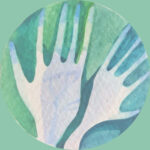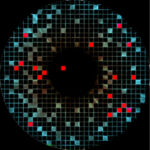Visualizing
the Virus
Smartphones & the Pandemic
Navigating care, surveillance, and connection in Japan
This series of illustrations visualise the early weeks of the coronavirus in Japan, when social scrutiny peaked and people felt pressure to show ‘self-restraint’ (jishuku) by limiting their activities. In my wider research conducted in non-pandemic times, it was typical that people experienced a high degree of social surveillance from their neighbours, yet this was felt to increase during the pandemic. Responsibility for limiting the spread of the virus through isolation was placed on individuals, and the smartphone therefore became an essential tool to stay connected in a way that was not deemed socially irresponsible. The smartphone also became a tool for both collecting and disseminating information about the spread of the disease, in particular through the ubiquitous messaging application LINE. While many people were already digitally well-equipped, others had to rapidly learn new practices of digital communication. Elderly people were particularly at risk if they did not use mobile phones, as people reported fears that a reduction in social contact would impact the progression of diseases such as Alzheimer’s. The way that smartphones were used during the virus revealed the fine line between care and surveillance. On the one hand, they became a lifeline and a way to mitigate social surveillance in communities, yet on the other, they became a way for the government to track the spread of the disease through LINE surveys. By visualising my conversations with interlocutors in Japan and sharing these illustrations on social media, I was able to make visible the stories that people felt were important which they did not see represented in media coverage of the virus.
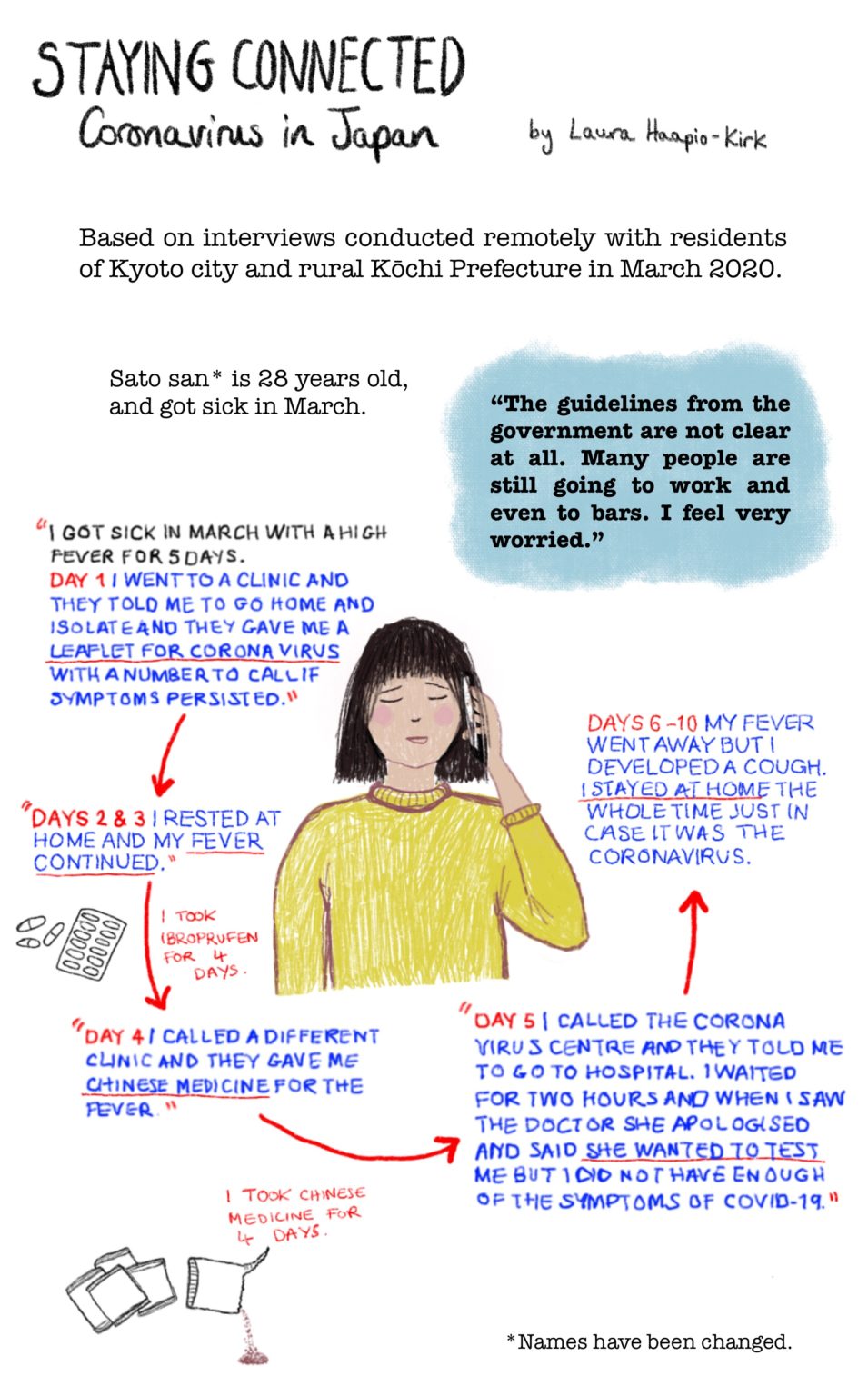
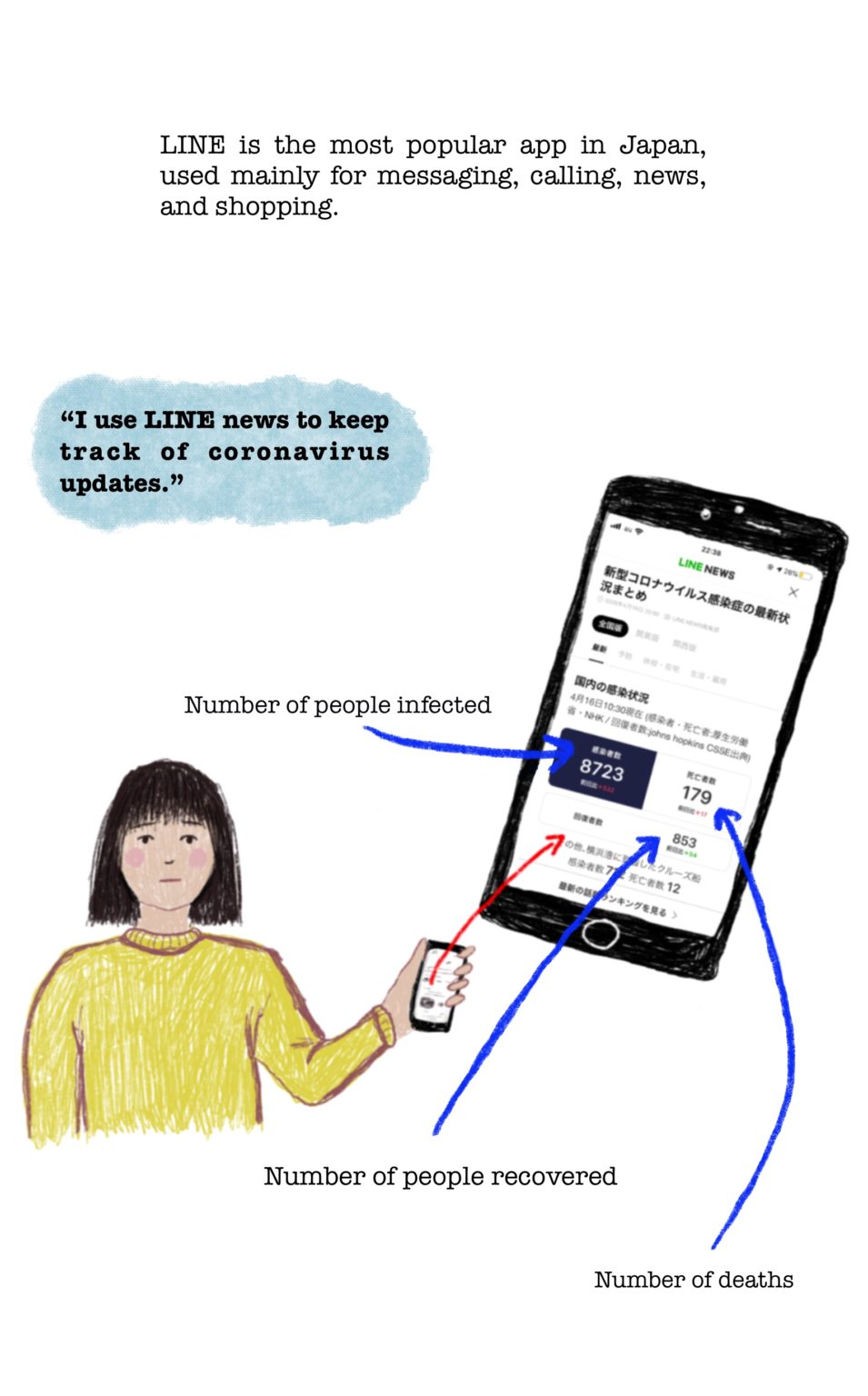
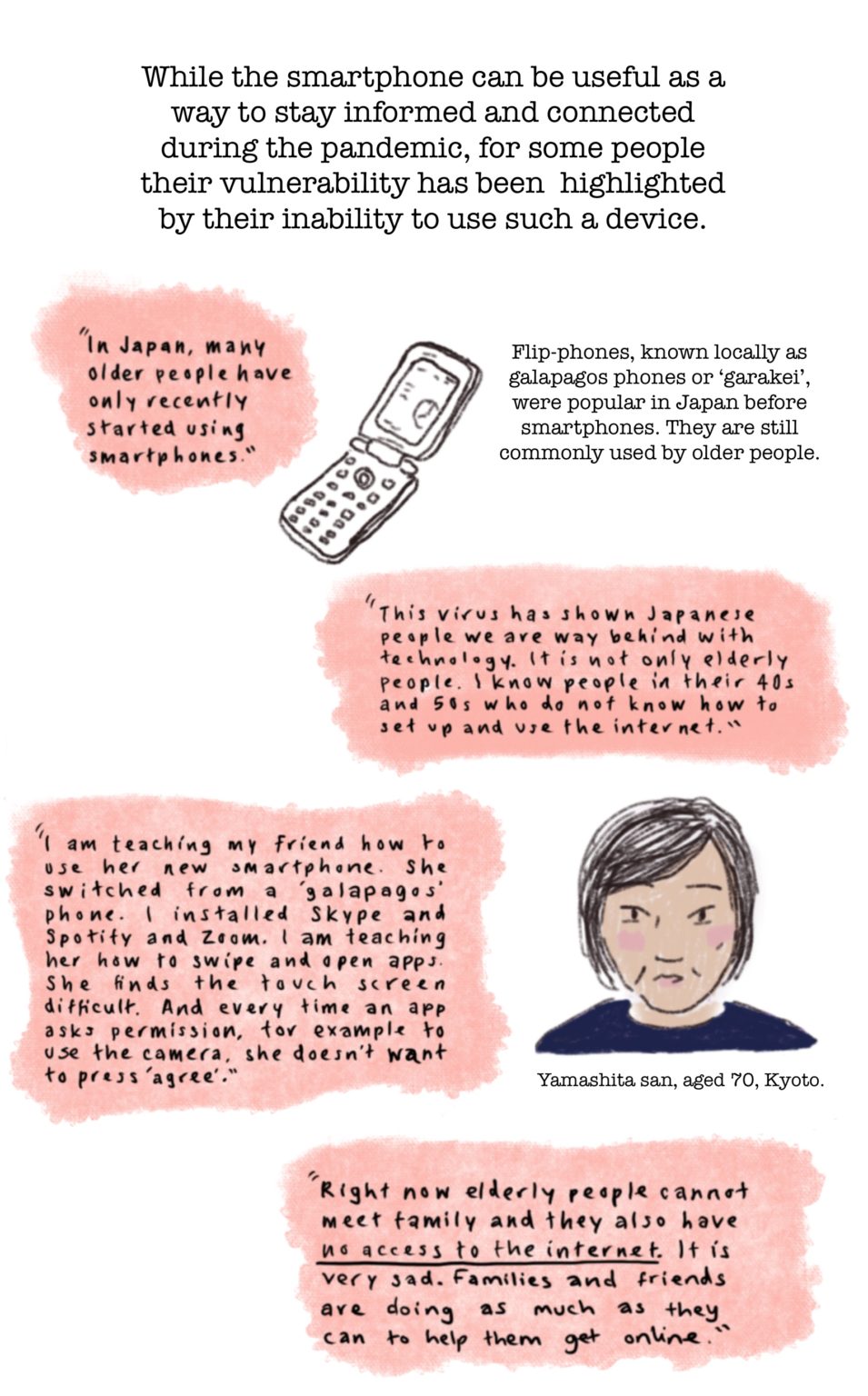
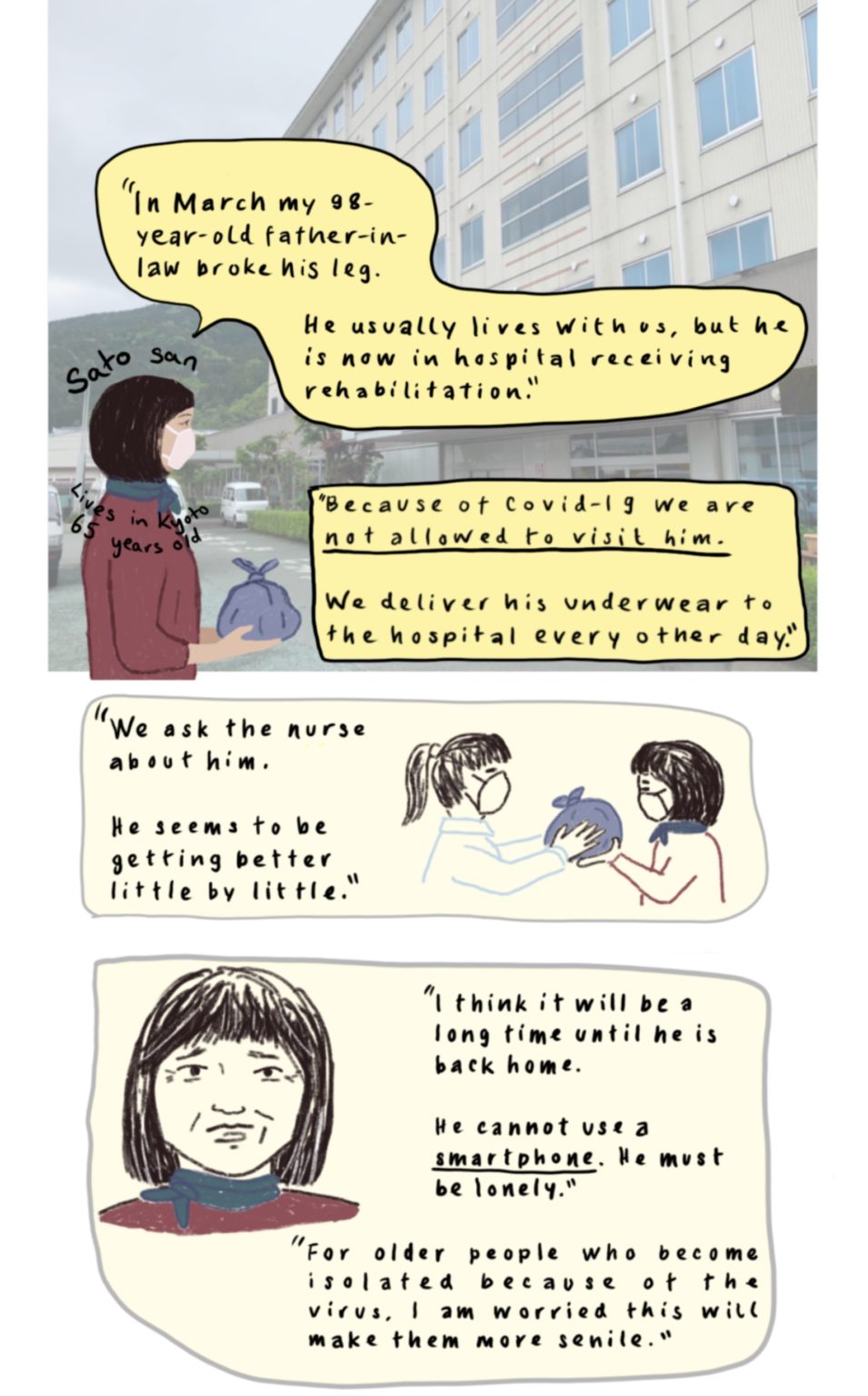
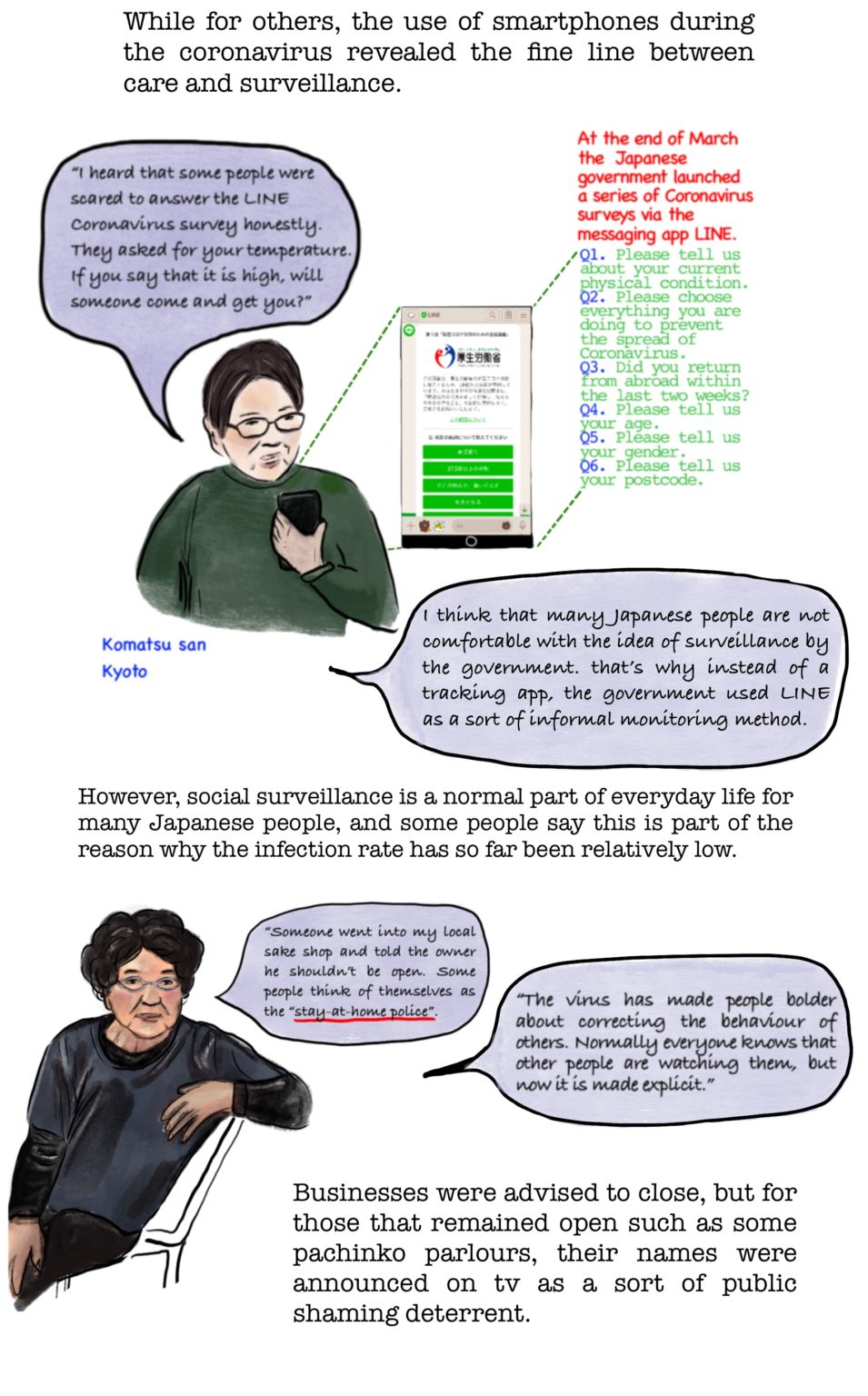
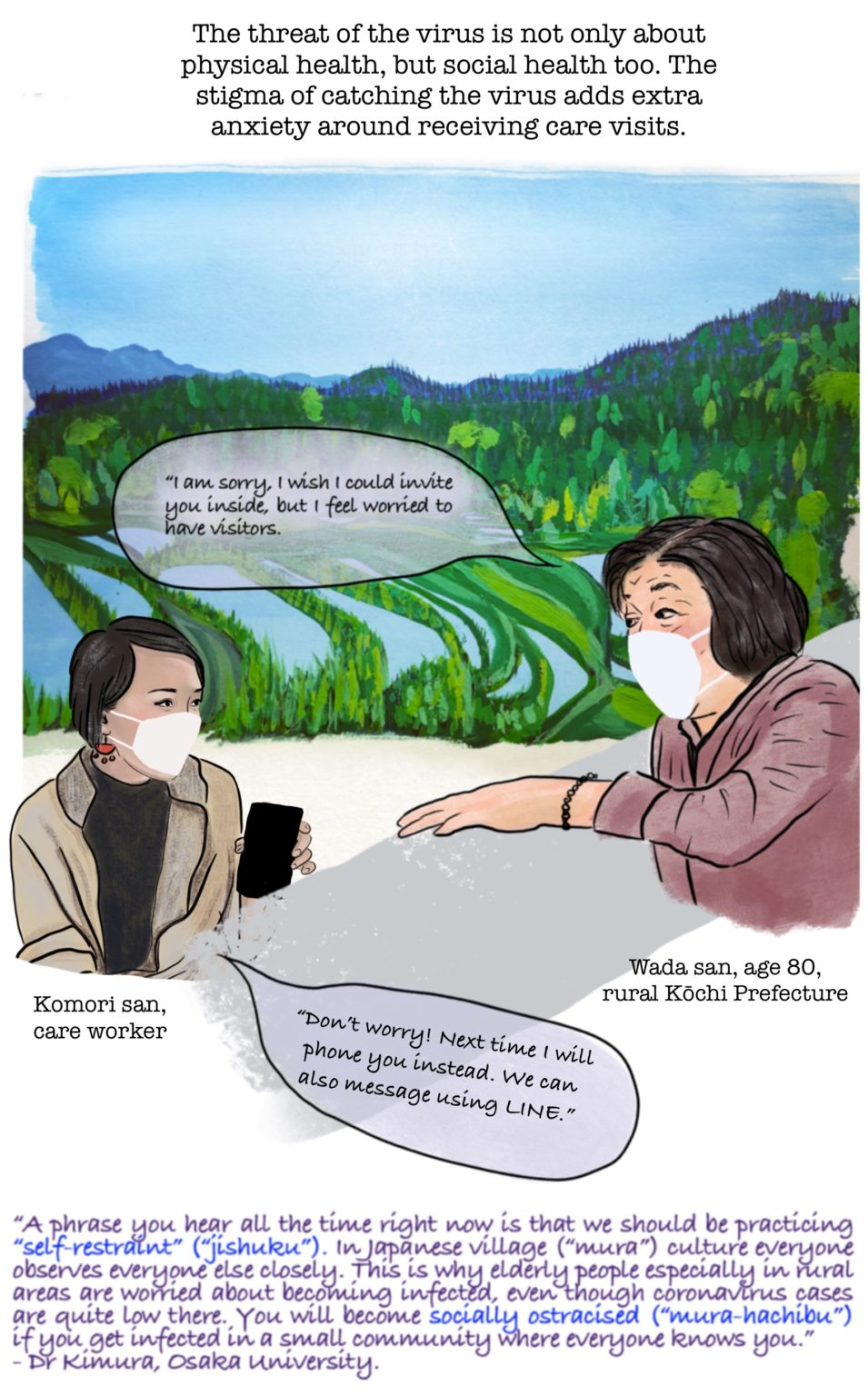
Images and research by Laura Haapio-Kirk. Originally published in Entanglements Journal under a creative commons licence (cc by-nc-nd 4.0).
